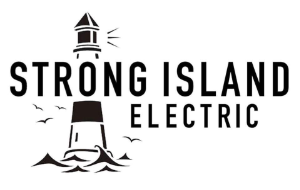Electrification is Expensive

- Switching your home heating system to an electric heat pump can cost you up to $42,000.1
- Heat Pumps are less efficient in colder climates and homes with them installed rely mostly on their other heating system during winter.2
- Wholesale electricity costs may double with the increased demand. Becoming as high as $200/MWh, this would be paid by consumers like you.1
Electrification isn’t Environmentally Friendly
- Power plants that supply electricity are the country’s largest consumer of fossil fuels, using over 50 million tons of coal every year on average. 3,4
- Electric power plants produce 1.6 - 2 billion tons of carbon dioxide a year. 5
- More than half of all of the power plants in the United States are located by low-income communities, putting a majority of the negative environmental and health related issues to those without the means to escape the negative effects nor represent themselves. 6
Electrification Puts Strain on Infrastructure
- It will cost $7-8 trillion to modernize the existing United States power grid infrastructure to meet the demands of strategic electrification. 7
- Extreme weather conditions pose challenges to the power supply with heavily increased demand, power outages can occur (either controlled by the utilities or total, uncontrolled collapses) that can leave you in the dark. 8
- Power grid operators frequently warn customers of power outages during severe heat or cold due to increasing their own fossil gas use, which leads to distribution shortages. 7
- Sweetser, Richard S., and Ray Albrecht. “The Economics & Environmental Performance of Biodiesel vs. Electric Heat Pumps.” Heat Show 2019 . Heat Show 2019 , 2019.
- Kuo, Fan-Yu. “Air Conditioning and Heating Systems in New Homes.” Https://Eyeonhousing.org/, 5 Dec. 2019, https://eyeonhousing.org/2019/12/air-conditioning-and-heating-systems-in-new-homes-4/.
- “Monthly Energy Release.” Https://Www.eia.gov/, Apr. 2019, https://www.eia.gov/totalenergy/data/monthly/pdf/sec1_24.pdf.
- “Electricity Data Browser.” Eia.gov, https://www.eia.gov/electricity/data/browser/#/topic/2?agg=1,0,2&fuel=8&geo=g&sec=o3g&linechart=ELEC.CONS_TOT.COW-US-99.M~ELEC.CONS_TOT.COW-US-1.M~ELEC.CONS_TOT.COW-US-94.M~ELEC.CONS_TOT.COW-US-96.M~ELEC.CONS_TOT.COW-US-97.M&columnchart=ELEC.CONS_TOT.COW-US-99.M~ELEC.CONS_TOT.COW-US-1.M~ELEC.CONS_TOT.COW-US-94.M~ELEC.CONS_TOT.COW-US-96.M~ELEC.CONS_TOT.COW-US-97.M&map=ELEC.CONS_TOT.COW-US-99.M&freq=M&start=200101&end=202212&ctype=linechart.
- Power Plant Emission Trends. https://www.epa.gov/power-sector/power-plant-emission-trends.
- Power Plants and Neighboring Communities. https://www.epa.gov/power-sector/power-plants-and-neighboring-communities
- Hyman, Leonard, and William Tiles. “The $7 Trillion Cost Of Upgrading The U.S. Power Grid.” Oilprice.com, 25 Feb. 2021, https://oilprice.com/Energy/Energy-General/The-7-Trillion-Cost-Of-Upgrading-The-US-Power-Grid.html.
- “Harsh Weather Conditions Could Pose Challenges to New England’s Power System This Winter.” Https://Isonewswire.com/, 6 Dec. 2021, https://isonewswire.com/2021/12/06/harsh-weather-conditions-could-pose-challenges-to-new-englands-power-system-this-winter/.









